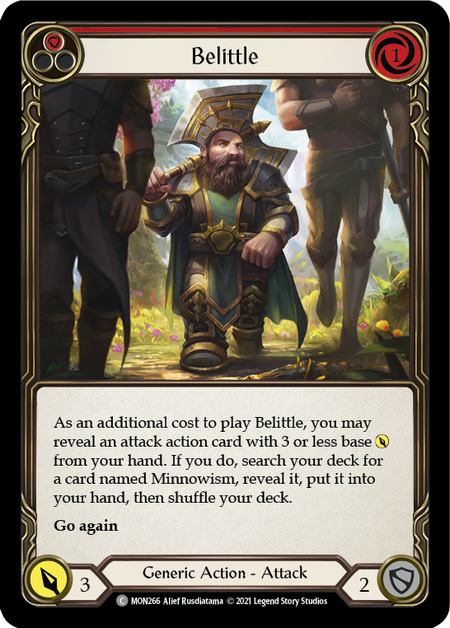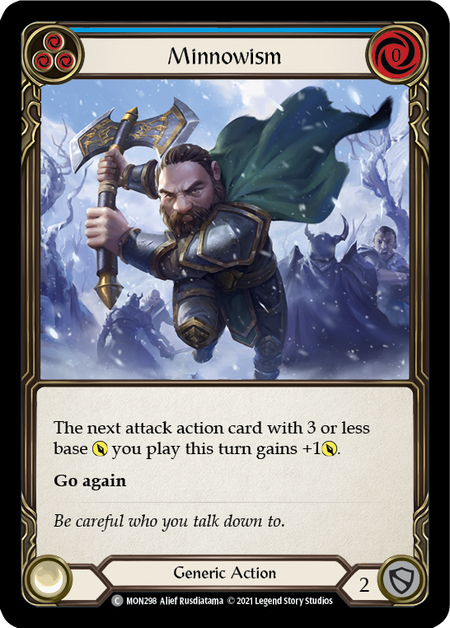
My name is Alex Truell. I'm the editor for the Rathe Times. I'm a casually competitive player overseeing the growth of a Flesh and Blood scene in Ripon, WI.
Strategically, I try not to follow trends, instead fixating on cards and tactics just outside the mainstream. I view this game through the lens of a player who cares about the competitive environment, but doesn't have to live in it; an optimist who loves the game, but can take a step back to critique it; and a deckbuilder who revels in novelty.
Thoughts and Baubles is an editorial space for the Rathe Times, where I discuss the game and respond to the community.
Across 35 events, the Nationals series has showcased the very best of Flesh and Blood. In the wake of Prism's ascension to Living Legend, the meta has completely opened up, and nearly a dozen heroes- and all 9 classes- have found space to claim a championship trophy.
For those of us who got into this game for the promise of viable paths to victory for every hero, this is the realization of that dream. But how did we get here? What's suddenly changed that we no longer see a top tier unassailable atop the mountain?
This is where the strength of a non-rotating format comes clearly into view.
The Evergreen Format and Living Legend
In an early statement of intent from Legend Story Studios, it was made clear that the company was against rotation- the scheduled removal of sets from competitive play to limit the card pool and refresh the meta. Instead, they designed a system called Living Legend, by which a hero (and later, their signature weapon) would leave the format after reaching a certain level of success in high-level play. And while there's room for debate as to whether Living Legend achieves its goals- and indeed, what those goals are- this performance-based method of rotation has done incredible things for the heroes who aren't targeted by it.
While Bravo, Star of the Show was asked to quickly cede his spotlight for the sake of the rest of the cast, Chane and Prism had time to drastically shape competitive play around them. Monarch may not have been considered a hit at launch, but over time it's become one of the most influential sets in the card pool- consider the impact of Belittle/Minnowism alone!


At first, it felt like the sets preceding Monarch were stepping stones to introduce the full scale of the game- and many feared that the heroes without talents would quickly become irrelevant. Certainly in metas warped by Chane and Prism, this appeared accurate. Further reinforcing this notion was the set design for the new age of talents: most new cards featured both talent and class, severely limiting the updates available to heroes of the past.
But when Prism left Classic Constructed, releasing the format from the heaviest influences of Monarch, we got our first glimpse of an open competitive landscape. And the results of that have been remarkable.
The Anumerical Value of Experience
While Boltyn, Oldhim, and Levia may have larger card pools, players have been refining their play with Dorinthea, Bravo, and Rhinar since the game's debut. That familiarity is a strategic advantage impossible to quantify. And with the composition of the competitive field uncertain, many have turned to their own experience to compensate.
Isaac Jessen recently wrote about the benefits of specialization- but even if you're not the sort of player to fully dedicate yourself to one hero, you've simply had some of these cards in your hands longer than others. The community at large has more collective experience with them. And while top-level players are still discovering and debating the best ways to build Fai, Iyslander, and Dromai, there's a sense of stability to the way Bravo is built.
Rather than rotating out of competitive play or forced out by steady power creep, the original heroes of Flesh and Blood have aged like wine: left in the basement perhaps, but ready to be brought out when the occasion calls for them.
Many newer players lack experience against them, and may find themselves making the same mistakes we all did when learning how to repel a Dawnblade attack- only the stakes are now much higher than the casual Armories (or, during the pandemic, home games and webcam tournaments) where we honed our skills.
But returning to the game's roots isn't just comfort food. Sometimes a fresh perspective and modern deckbuilding sensibilities can result in an unexpectedly potent revival of an old classic. Take Nitya Kalaichelvan's Nationals-winning Rhinar deck. With a strict focus on 2-cost attacks and an intentional aim of encouraging blocking via threatening on-hit consequences, Nitya developed a decklist that was able to perform even in an era of icy disruption and fiery aggro.
The Best and the Rest
The results of Nationals have left little room for debate as to whether or not there are 'top heroes'. Oldhim has claimed significantly more championship trophies than other heroes, and the Runeblades continue to perform as we've grown accustomed to. But even Oldhim has lost more championships than he has won.
When selecting the deck you're going to compete with, serious consideration needs to be given to whether your odds are better with 'the top dog' or 'the underdog'. If you bring Oldhim, do you believe you'll be the most skilled Oldhim player there? If not, perhaps you should be looking at a deck that can beat Oldhim. There's a distinct advantage to being the best player piloting any given hero.
Ultimately, this is what most of us want from the game: we want the chance to play any hero we like, and to have a shot at winning with them. And while Azalea and Katsu still have a long way to go, the competitive meta that exists right now is a showcase of that potential.



